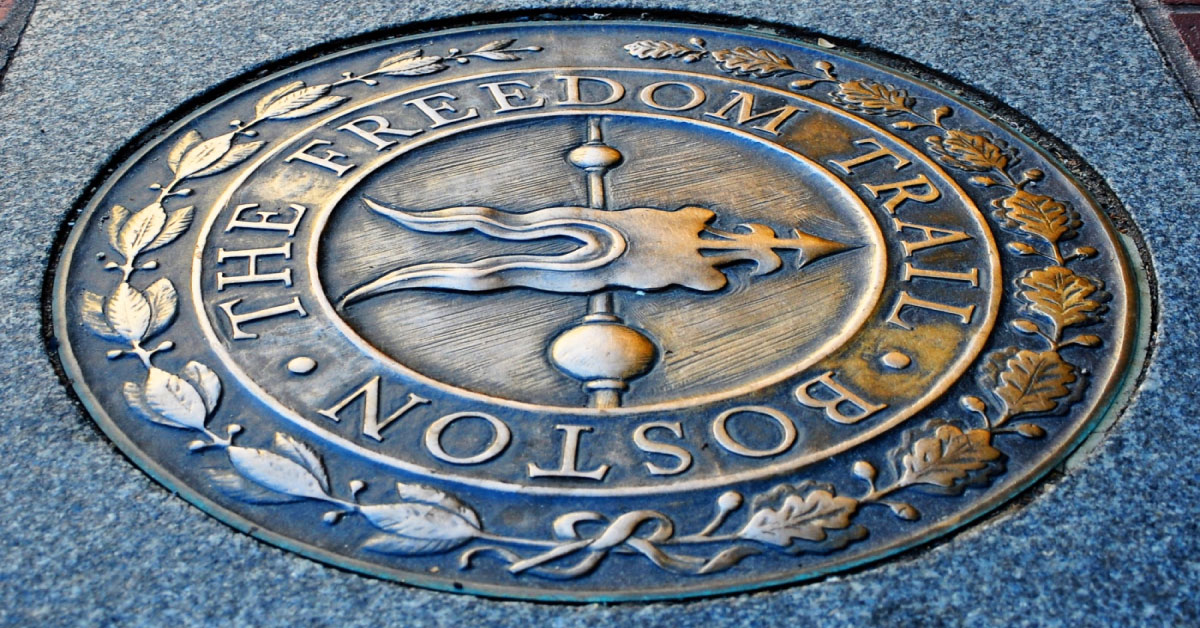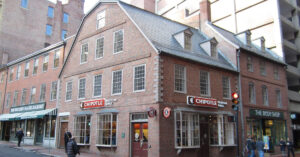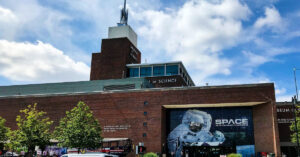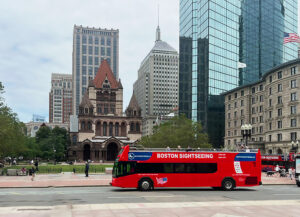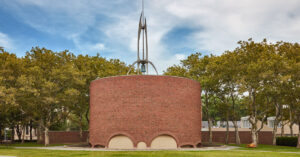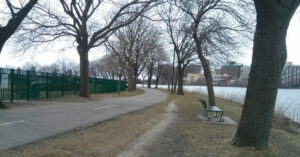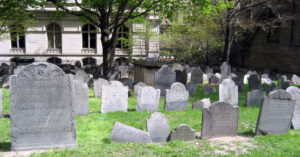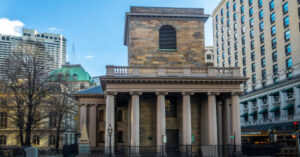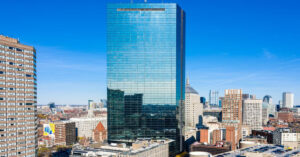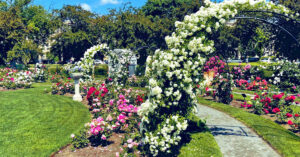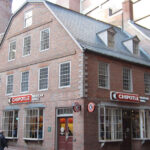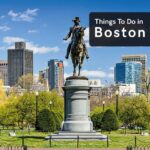The Boston Freedom Trail is a 2.5-mile walking route that takes you through 16 historically significant sites, each with its own captivating story to tell. From the Boston Common to the Bunker Hill Monument, this trail winds through the heart of the city, offering a glimpse into the past and present of Boston.
So please put on your walking shoes and get ready for an unforgettable journey as we explore the important sites that make up the Boston Freedom Trail.
Boston Common
Your journey begins at Boston Common, the oldest public park in America. This 50-acre green space has served as a gathering place for both recreational activities and political protests throughout history. In 1634, it was also the site of America’s first public school, Boston Latin School, and the Central Burying Ground, where many notable figures were laid to rest. Take a stroll through this picturesque park and feel the energy of its past.
The Massachusetts State House
The next stop on the trail is the magnificent Massachusetts State House. Built-in 1798, this iconic golden-domed building is a symbol of the city’s freedom and independence. As you tour the State House, you’ll learn about its rich history and see where important legislative decisions are made to this day.
Park Street Church
Just across from the State House stands Park Street Church, also known as “the church of freedom.” This historic church played a significant role in the abolitionist movement and was where William Lloyd Garrison delivered his famous anti-slavery speech. Step inside and admire the beautiful architecture while learning about its impact on Boston’s history.
Granary Burying Ground
As you continue your walk, make sure to stop by the Granary Burying Ground, the final resting place of many notable figures, including three signers of the Declaration of Independence: Samuel Adams, John Hancock, and Robert Treat Paine. This cemetery also holds the graves of Paul Revere, Benjamin Franklin’s parents, and other important historical figures.
King’s Chapel & Burying Ground
Next up is King’s Chapel, the oldest Anglican church in New England. This stunning Chapel was built in 1686 and has a rich history dating back to the Revolutionary War. Take a tour of the Chapel and explore the adjacent burying ground, where many prominent Bostonians were laid to rest.
Old Corner Bookstore
Continue your journey to the Old Corner Bookstore, a historic building that has been a gathering place for intellectuals and writers since the 19th century. This landmark was once home to publishing companies and even served as a meeting place for literary greats such as Ralph Waldo Emerson and Henry Wadsworth Longfellow.
Old South Meeting House
The Old South Meeting House is a must-see on the Freedom Trail, as it was the site of some of Boston’s most significant protests leading up to the American Revolution. This meeting house was where colonists gathered to protest the Stamp Act in 1765 and ultimately sparked the famous Boston Tea Party.
Old State House Museum
As you make your way to the Old State House Museum, you’ll pass by the site of the Boston Massacre, where five colonists were killed by British soldiers in 1770. The Old State House was also where the Declaration of Independence was first read to the citizens of Boston on July 18, 1776.
Faneuil Hall
The next stop is Faneuil Hall, a bustling marketplace that has been a center of commerce and political discourse since the 18th century. This historic hall was also where colonists gathered to protest the Sugar Act in 1764, making it a crucial site in the fight for independence.
Paul Revere House
The Paul Revere House is a must-visit for any history buff. This 17th-century home is where Paul Revere lived during the American Revolution and was also the location of his famous “midnight ride.” Step inside and explore how people lived during this pivotal time in American history.
Old North Church
Make your way to the Old North Church, the oldest church building in Boston, and see where lanterns were hung to signal Paul Revere’s famous ride. This beautiful church is still an active Episcopal parish and holds many historical artifacts.
Copp’s Hill Burying Ground
Walking next, take a peaceful break from the bustling city at Copp’s Hill Burying Ground, Boston’s second-oldest cemetery. This tranquil spot offers breathtaking views of the city and is home to many notable figures, including Cotton Mather and Increase Sumner.
USS Constitution
Once you visit the Copp’s Hill Burying ground following along the path, you will reach the USS Contradiction. No visit to the Freedom Trail is complete without a stop at the USS Constitution, also known as “Old Ironsides.” This 44-gun frigate played a crucial role in the War of 1812 and is still an active-duty ship in the US Navy. Please take a tour and learn about its fascinating history.
Bunker Hill Monument
The final stop on the Freedom Trail is the Bunker Hill Monument, a towering obelisk that stands as a tribute to those who fought in the first major battle of the American Revolution. Climb the 294 steps to the top and take in panoramic views of Boston and its surrounding areas.
Wrapping Up
As you reach the end of the journey along the Boston Freedom Trail, it’s clear that this path is not just a route through Boston but a journey through America’s rich history and unwavering spirit. From the first steps of freedom at Boston Common to the iconic Bunker Hill Monument, each stop along the trail offers a unique perspective on our nation’s past.
So, if you find yourself in Boston, take some time to walk this historic path and immerse yourself in the stories of those who fought for our freedom. As Benjamin Franklin once said, “Those who would give up essential Liberty to purchase a little temporary Safety deserve neither Liberty nor Safety.” Let us continue to honor their sacrifice and cherish the liberties they fought for on the Boston Freedom Trail.
